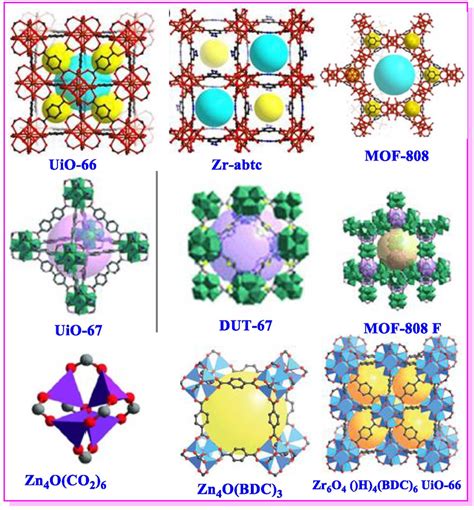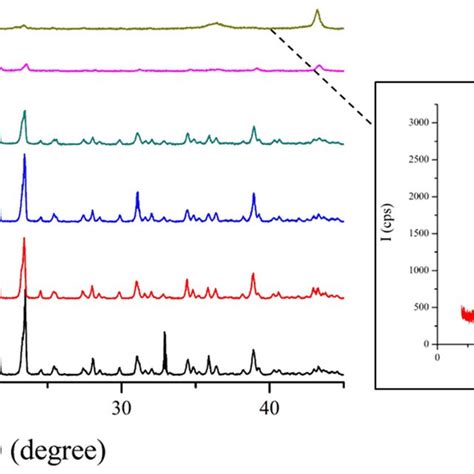fabricating metal organic frameworks in situ growth Here, we developed three-dimensional (3D) zirconium metal–organic frameworks (MOFs) encapsulated in a natural wood membrane (UiO-66/wood membrane) for highly . $694.32
0 · metal organic structures
1 · in situ metal organic analysis
2 · in situ metal organic
3 · in situ growth of organic fiber
4 · in situ growth of organic
5 · in situ growth of metal organics
6 · in situ growth of metal organic framework
7 · in situ growth of metal
Get the best deals for Vintage Toy Tool Box at eBay.com. We have a great online selection at the lowest prices with Fast & Free shipping on many items!
This paper comprehensively reviews the fabrication methods of pure MOF membranes and films, including in situ solvothermal synthesis, secondary growth, .Metal organic frameworks (MOFs) are a kind of porous coordination polymer . Crystalline metal-organic frameworks (MOFs) are formed by reticular synthesis, which creates strong bonds between inorganic and organic units. Careful selection of MOF constituents can yield crystals of ultrahigh . Here, we developed three-dimensional (3D) zirconium metal–organic frameworks (MOFs) encapsulated in a natural wood membrane (UiO-66/wood membrane) for highly .
metal organic structures
in situ metal organic analysis
Recently, significant new insights into the fundamental processes governing MOF nucleation and growth, as well as the relationship between reaction parameters and synthetic .In situ growth of a stable metal-organic framework (MOF) on flexible fabric via a layer-by-layer strategy for versatile applications This paper presents a novel approach for minimizing non-selective defects in metal-organic framework (MOF) membranes by a constricted crystal growth strategy in a confined .
We have developed an in situ bottom–up growth approach in which metal–organic framework (MOF) precursors are well dispersed in the polymerization mixture used for the preparation of the polymer membrane.
Metal organic frameworks (MOFs) are a kind of porous coordination polymer supported by organic ligands with metal ions as connection points. They have a controlled structure and porosity and a significant specific .In situ growth of cyclodextrin-based metal-organic frameworks (CD-MOFs) is investigated for the effective fabrication of MOF composites through the vapor diffusion method combined with O 2 plasma treatment. Metal-organic frameworks (MOFs), being a type of the most representative porous nanomaterials, have been regarded as a promising candidate to fabricate antibacterial .
blackhawks metal lunch box
in situ metal organic

blade runner 2049 steel box
By the in-situ growth method, the metal nodes of UiO-66 are attached to fixed sites, enabling optimization of the distribution and homogeneity of UiO-66, and the numerous crystalline nucleation sites can achieve a high UiO-66 loading. . Fabrication of metal-organic frameworks@cellulose aerogels composite materials for removal of heavy metal . Introduction. Porous solid materials with nanoscale porosity that exhibit an extremely high surface area-to-volume ratio have long been used for a variety of applications including adsorption, separation, ion exchange, and heterogeneous catalysis. 1,2 Of this family, metal–organic frameworks (MOFs), which are made of metallic ions interconnected with . Here, an in situ growth strategy to achieve high dispersion of metal–organic frameworks (MOFs)‐anchored cellulose nanofibrils to enhance the interface connection quality is proposed. Followed by a facile freeze‐casting and carbonization treatment, sustainable biomimetic porous carbon aerogels with highly dispersed and closely connected . The intrinsic porosity in the periodic structures of metal–organic frameworks (MOFs) endows them with a great potential for membrane separation. However, facile fabrication of crystalline MOF membranes has been challenging and limited to few materials for economic and environmental considerations.
Fabrication of in situ metal-organic framework grown on sodium lignosulphonate hydrogel for . (SLS/DTPA) hydrogels adsorbent using an assembly strategy that combined free radical polymerization and in-situ growth. The SLS/DTPA@ZIF-8 adsorbent exhibited excellent performance in removing . Facile fabrication of a broad-spectrum starch/poly .
The Na 2 SO 4 rejection still remains high even after a 6 h in-situ growth time, suggesting the in-situ growth strategy in this study can effectively eliminate defects in PA layer. Therefore, for the subsequent performance assessments, PA/iCM/PES membranes that prepared underwent a 6-h in-situ growth process were selected. The bimetallic metal-organic frameworks (MOFs) assembled from ferrocene (Fc) derivative-based bridging ligands ar . Fabrication of flower-like CoFe/C composites derived from ferrocene-based metal-organic frameworks: an in situ growth strategy toward high-efficiency electromagnetic wave absorption In the present work, we develop novel method of loading metal-organic frameworks (UiO-66 and UiO-66-NH 2) on the flexible cellulose aerogels as metal-organic frameworks@cellulose aerogels composite materials by using in situ growth procedure at room temperature.The as prepared metal-organic frameworks@cellulose aerogels composite .
The development of economical and versatile catalysts is of both technological and fundamental interest in the synthesis of COFs. Imine COFs are a widely investigated class of COFs commonly synthesized via the Schiff base reaction that requires the use of acetic acid, elevated temperatures, reduced pressure, and long reaction periods. Here, we present group . Metal–organic frameworks (MOFs) exhibit an exceptional surface area-to-volume ratio, variable pore sizes, and selective binding, and hence, there is an ongoing effort to advance their processability for broadening their utilization in different applications. In this work, we demonstrate a general scheme for fabricating freestanding MOF-embedded polymeric fibers, . Fabrication of in situ metal-organic framework grown on sodium lignosulphonate hydrogel for removal of Pb . (SLS/DTPA) hydrogels adsorbent using an assembly strategy that combined free radical polymerization and in-situ growth. The SLS/DTPA@ZIF-8 adsorbent exhibited excellent performance in removing heavy metal . Metal-organic framework .
in situ growth of organic fiber
The intrinsic porosity in the periodic structures of metal–organic frameworks (MOFs) endows them with a great potential for membrane separation. However, facile fabrication of crystalline MOF membranes has been challenging and limited to few materials for economic and environmental considerations. Herein, a continuous Zr-MOF thin film with a thickness of ≈180 nm has been .
In situ bridging soft polymer and robust metal-organic frameworks as electrolyte for . gel polymer electrolytes have become one of the most desirable alternatives among electrolytes for the fabrication of advanced batteries with enhanced safety, flexibility, and cycling stability. . (3D) Poly (vinylidene fluoride-co-hexafluoropropylene .
This study introduces a monomer-mediated in situ layer-by-layer growth strategy employing a timed injection method for fabricating magnetic covalent organic frameworks. The hybrid MCOFs produced, Fe 3 O 4 @SiO 2 @COF and Fe 3 O 4 @SiO 2 @COF-DMSA, possess abundant binding sites that enhance adsorption capacities, rapid kinetics, and remarkable .
Here, we present a green and simple method for the in-situ growth of γ-cyclodextrin-based metal–organic frameworks (γ-CD-MOFs) in A4-sized printing paper (A4 paper).γ-CD-MOFs are biocompatible and low toxic MOFs made by the coordination of potassium ion (K +) and γ-CD [30]. γ-CD-MOFs have shown high potential in the application of gas capture, storage, and . Metal-organic frameworks (MOFs) exhibit an exceptional surface area-to-volume ratio, variable pore sizes, and selective binding, and hence, there is an ongoing effort to advance their processability for broadening their utilization in different applications. . Performance Fabrics Obtained by In Situ Growth of Metal-Organic Frameworks in .Performance Fabrics Obtained by In Situ Growth of Metal−Organic Frameworks in Electrospun Fibers Maya Molco, Fabrice Laye, Enrique Samperio, Shiran Ziv Sharabani, Victor Fourman, Dov Sherman, . Third, as the MOF growth process occurs post-fabrication, there should exist an antisolvent that can penetrate the polymer matrix and induce the .
Also, in-situ growth method benefits the compatibility between CH and MOFs. Zhao et al. employed in-situ growth method to embed MOFs in the CH matrix (Fig. 6 c). Due to the coordination between metal ions and –NH 2 groups in CH, MOF particles were uniformly distributed in the CH beads without obvious aggregation, showing good stability [139]. In this work, we demonstrate a general scheme for fabricating freestanding MOF-embedded polymeric fibers, in which the fibers themselves act as microreactors for the in situ growth of the MOF .
Bacterial-induced infectious diseases have always caused an unavoidable problem and lead to an increasing threat to human health. Hence, there is an urgent need for effective antibacterial strategies to treat infectious diseases. Current methods are often ineffective and require large amounts of hydrogen peroxide (H2O2), with harmful effects on normal healthy .
black stainless steel appliances oak cabinets
Among in situ growth methods, the fabrication of intermediate compounds on the substrate, which easily convert to MOF, can be considered as one of the most effective ways to control the growth of MOFs [17,30]. . Direct growth of metal-organic frameworks thin film arrays on glassy carbon electrode based on rapid conversion step mediated by . We have developed an in situ bottom–up growth approach in which metal–organic framework (MOF) precursors are well dispersed in the polymerization mixture used for the preparation of the polymer membrane. MOF precursors were then rearranged and uniformly distributed within a cross-linked hydrophilic PEG-based polymer membrane using thermal .
In Situ Fabrication of Metal–Organic Framework Thin Films with Enhanced Pervaporation Performance . 2-methyimidazole was anchored onto the CNT surface followed by 3-hour in situ growth in .
In Situ Fabrication of Porous Nanostructures Derived from Bimetal-Organic Frameworks for Highly Sensitive Non-Enzymatic Glucose Sensors . Metal-organic frameworks (MOFs), . G. and Tang Z. 2016 Ultrasensitive non-enzymatic glucose sensors based on different copper oxide nanostructures by in situ growth Sens. Actuators B 236 326. Go to .A facile in-situ ionothermal synthesis strategy for fabrication of ionic liquids/metal-organic frameworks (MOFs) (ILs@ZIF-8) nanocomposites hybrid monolith has been proposed to facilitate highly effective capillary microextraction (CME) of ultra . In recent years, metal-organic framework/cellulose composites have gradually attracted the attention of scientists [13], [29]. Kitaoka and co-workers reported a densely packed barrier film with low oxygen permeability obtained by in-situ growth of MOF on cellulose nanofibers (CNF) for high-performance gas-separation [30]. But the barrier films .
Enantioselective identification of chiral molecules is important for biomedical and pharmaceutical research. However, owing to identical molecular formulas and chemical properties of enantiomers, signal transduction and amplification are still the two major challenges in chiral sensing. In this study, we developed an enantioselective membrane by integrating homochiral .

I AM OFFERING FOR SALE THIS EVENING AN INTERESTING VINTAGE SMALL METAL JEWELRY BOX, MADE APPROXIMATELY SECOND PART OF 20TH CENTURY. MEASURES - 5 CM HEIGHT X 8 CM DIAMETER, APPROXIMATELY 2 X 3 INCHES. CONDITION - HAVE SPOTS AND SCRATCHES. ITEMS ARE PRE - OWNED, ANTIQUE SHOPS FINDS, .
fabricating metal organic frameworks in situ growth|in situ growth of metal organics